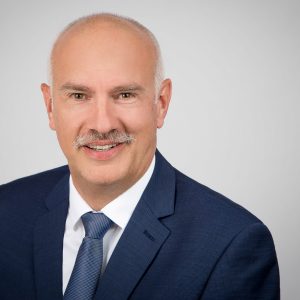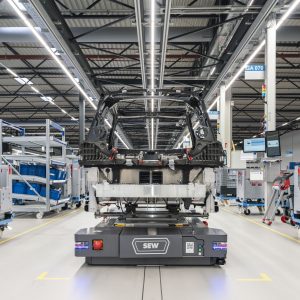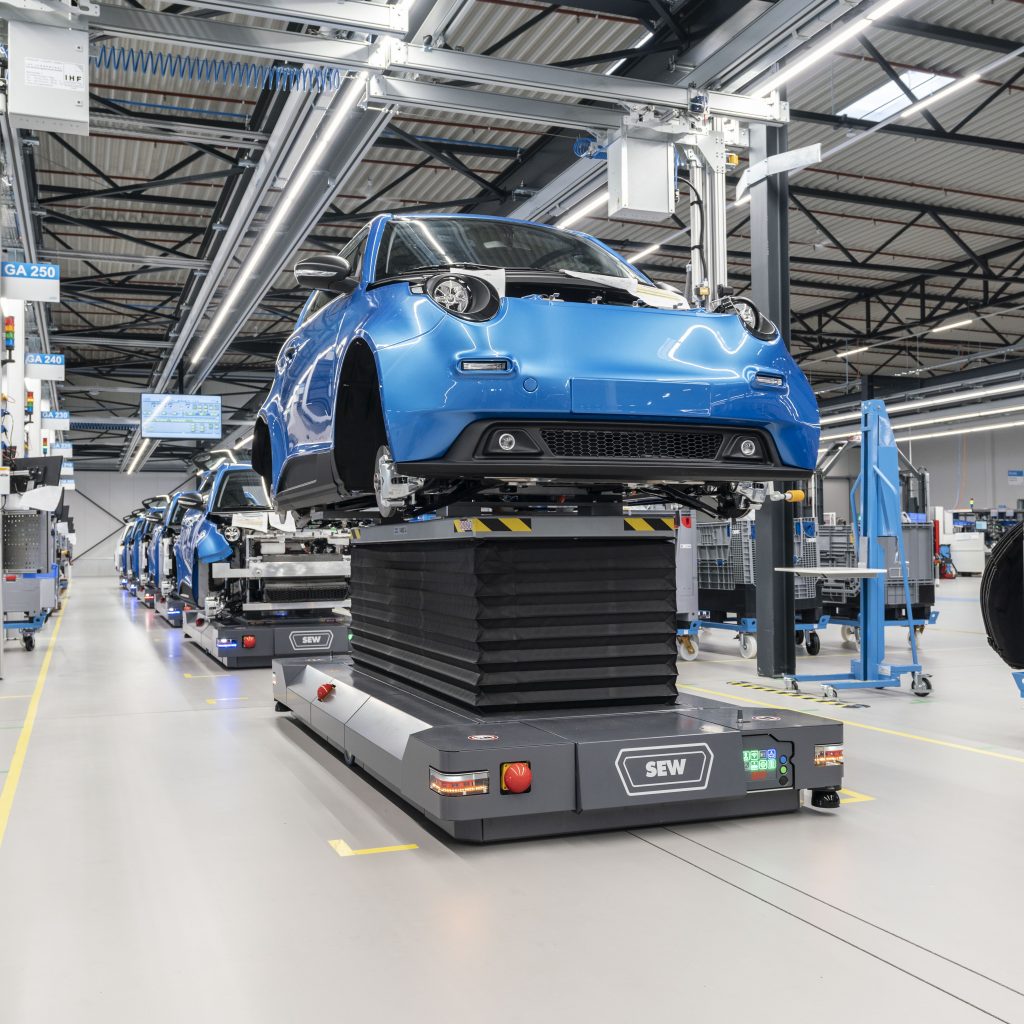e.GO: Automotive construction rethought
The carmaker e.GO Mobile AG from Aachen is building one of the world’s cheapest electric cars, the e.GO Life. In addition, the electric four-seater was developed three times faster than usual with only one tenth of the usual costs.
Series production of the e.GO Life started in March 2019 within just three years. The vehicle was built with a comparatively small budget. But how did e.GO and its partners manage to build the small car so efficiently? And what special role does purchasing and agile project management play in this?

Completely redesigned vehicle construction
Professor Dr. Günther Schuh founded the company e.GO out of his production research at the RWTH Aachen. On the one hand, he wanted to prove with the e.GO Life that highly iterative, in other words step-by-step development processes can be used to profitably build electric cars even in the small car segment with small quantities. On the other hand, he proves that the operating costs of an electric car can be lower per kilometer driven or per month than comparable combustion models.
To ensure that the e.GO project can be successful, Schuh and his team have completely rethought the construction and production technologies of traditional car manufacturers. The e.GO team is focusing primarily on agile project management and a management term that originally comes from rugby: Scrum.
Self-organizing teams and step-by-step optimizations
Scrum stands in rugby for the bunch of players fighting for the ball. As in rugby, the scrum methodology in agile project management needs fast and strong teams that work constructively together.
Rigid rules and time-consuming project documentation, such as the creation of specifications, are waived. Instead, they rely on personal responsibility and self-organizing teams. In this way, projects should progress more flexibly and dynamically than in conventional project management.
Thanks to scrum management, all tasks and processes are transparent for the entire team. A glance at the project wall is all it takes to quickly see whether a task has not been carried out correctly or has been left unfinished. At regular meetings, solutions are then sought openly and constructively. This requires team spirit, but also the ability of each individual team member to be critical.
In addition, particular importance is attached to ensuring that the hierarchies are flat and that the opinion of a young professional is respected just as much as that of the project manager. Otherwise, useful ideas could not be expressed, which would harm the project.

Plan little and achieve a lot: In contrast to traditional car construction, the production of the e.GO Life was deliberately not planned from the beginning. New components or processes are designed and developed by interdisciplinary teams that think as simply and pragmatically as possible. The resulting prototypes and processes are then tested virtually and realistically for their suitability. If something does not work, it is immediately discarded or completely rethought. At e.GO, components and processes are optimized and further developed on the basis of practical experience.
Networking: horizontal instead of vertical
Agile project management only works with fast and smooth information flows. While the classic automotive industry is vertically networked and information can only flow slowly, be falsified or even get lost, e.GO relies on the horizontal networking of its employees and departments.
At e.GO, for example, the internal buyers and purchasing experts of the Kloepfel Group were involved in the development process at an early stage. This purchasing concept of advanced purchasing helps the buyers to better understand the product and the requirements. This eliminates the need for time-consuming consultations and enables the purchasing department to negotiate with suppliers competently and independently. Ultimately, the requirements could be optimized both technically and in terms of costs.
“Through its product competencies, purchasing has also become a networking innovation driver that helps build key suppliers into development partners,” says Robert Grosch, vice president of procurement at e.GO.
Suppliers: the vision as a link
A further challenge in purchasing was the market position of suppliers, as their customer base is quite manageable. In contrast to the large car manufacturers, e.GO does not buy in such large quantities that they can agree on larger volume discounts with the suppliers.
For this reason, the purchasing teams, together with the purchasing specialists of the Kloepfel Group, communicated to the suppliers the vision and future potential of e.GO for joint growth. This shows that a good buyer must be able to do more than just order. He must also be able to develop trust for the vision with the suppliers.
Purchasing: lean and creative
More than 20 managers work in e.GO’s purchasing department, from indirect purchasing to the capex sector and strategic purchasing. In order to relieve them of work that does not add value, the creation of orders and invoice verification, for example, were outsourced to German-speaking purchasing managers at Kloepfel Services in Slovakia.
In addition to lean purchasing, creative purchasing is also in demand. In order not to burden the e.GO warehouses unnecessarily and at the same time to find suitable suppliers, Kloepfel did not always turn to the classic automotive suppliers for certain parts. Instead, suitable partners were found, for example among producers of special vehicles, as these are geared to the production of small series parts.
Construction with pointed pencil
While car manufacturers are already investing millions in the development of headlamps or car seats alone, e.GO has largely avoided such costly development efforts. Instead, they considered which components were already available on the market and which could be inexpensively adapted. Just those parts that e.GO did not found on the market were developed by themselves.
A new approach has also used for materials: Thus e.GO, for example, builds the chassis of its vehicles from aluminum profiles, which require only inexpensive tools for their manufacture. The tool kit alone for a comparable chassis from another material costs around 120 million euros. That is many times more than what e.GO spends.
The outer skin is made of thermoplastic, which is normally used for bumpers. Expensive paintwork and rust protection are thus superfluous. Advantages: Weight savings, consistent shaping, inexpensive repairs in the event of damage and improved safety.
“The e.GO example shows how important purchasing is in rethinking production in order to be able to offer innovative products at marketable prices. This requires buyers who, in addition to their professional competence, also have a high level of social competence and believe in their company’s vision,” explains Grosch.
The Kloepfel project in numbers
| Team size | Six consultants of the Kloepfel Group |
| Duration | In total 2.5 years, project still in progress |
| All purchasing topics of the vehicle | Powertrain E/E – Connectivity Body / Frame Chassis & Safety Interior Exterior |
| Measures | Supplier research / tenders Capex-purchasing Outsourcing of operational tasks (order creation / invoice verification) Design of purchasing relevant documents Creation of coordinated process chains Tenders – Direct negotiations Capex-purchasing |
Do you have any further questions or would you like to have a free briefing? Contact us now:
rendite@kloepfel-consulting.com or P: +49 211 / 875 453 23
Further information about Kloepfel Consulting can be found here:
Authors:


